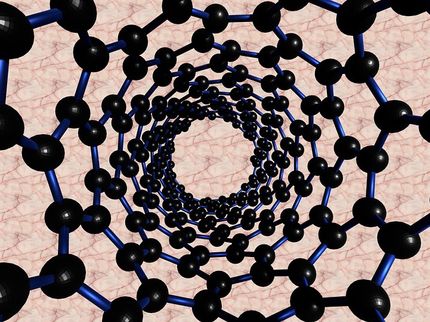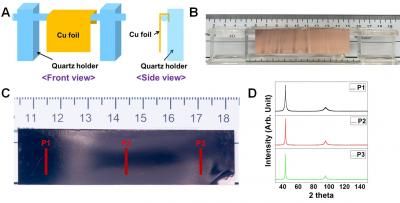A recipe for controlling carbon nanotubes
Case Western Reserve University researchers find mixing different metals in a catalyst can help determine structure, function
Advertisement
Nanoscopic tubes made of a lattice of carbon just a single atom deep hold promise for delivering medicines directly to a tumor, sensors so keen they detect the arrival or departure of a single electron, a replacement for costly platinum in fuel cells or as energy-saving transistors and wires.
Single-walled carbon nanotubes, made of a cheap and abundant material, have so much potential because their function changes when their atomic-level structure, referred to as chirality, changes. But for all their promise, building tubes with the right structure has proven a challenge.
A pair of Case Western Reserve University researchers mixed metals commonly used to grow nanotubes and found that the composition of the catalyst can control the chirality. In a letter published in Nature Materials, R. Mohan Sankaran, an assistant professor of chemical engineering at the Case School of Engineering, and Wei-Hung Chiang, who received his doctorate degree in chemical engineering in May, describe their findings.
"We have established a link between the structure of a catalyst and the chirality of carbon nanotubes," Sankaran said. "Change the catalyst structure by varying its composition, and you can begin to control the chirality of the nanotubes and their electrical and optical properties."
The chirality of a single-walled carbon nanotube describes how a lattice of carbon atoms is rolled into a tube. The rolling can occur at different angles, producing different structures that exhibit very different properties.
Nanotubes are normally grown in bulk mixtures. When using a nickel catalyst, typically one-hird of those grown are metallic and could be used like metal wires to conduct electricity. About two-thirds are semiconducting nanotubes, which could be used as transistors, Chiang explained. But, separating them according to properties, "is costly and can damage the nanotubes."
Chiang and Sankaran found that a mixed iron and nickel catalyst could change the outcome. Of the compositions tested, a catalyst of 27 percent nickel and 73 percent iron produced the most dramatic result: the vast majority of the nanotubes were semiconducting. They are now working on assessing the purity and integrating the nanotubes into thin film transistors.
The authors say their findings open the door to experimenting with other elements as catalysts and different combinations, which may produce near-pure nanotubes with desired properties.
Original publication: "Linking catalyst composition to chirality distributions of as-grown single-walled carbon nanotubes by tuning NIxFe1-x nanoparticles."; Nature Material2009.
Other news from the department science
These products might interest you
Most read news
More news from our other portals
See the theme worlds for related content
Topic world Sensor technology
Sensor technology has revolutionized the chemical industry by providing accurate, timely and reliable data across a wide range of processes. From monitoring critical parameters in production lines to early detection of potential malfunctions or hazards, sensors are the silent sentinels that ensure quality, efficiency and safety.

Topic world Sensor technology
Sensor technology has revolutionized the chemical industry by providing accurate, timely and reliable data across a wide range of processes. From monitoring critical parameters in production lines to early detection of potential malfunctions or hazards, sensors are the silent sentinels that ensure quality, efficiency and safety.


































































